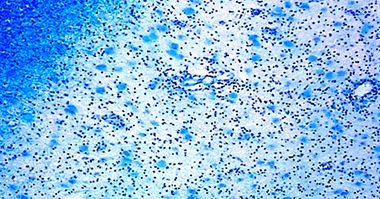Excessive daydreaming: what it is, symptoms, causes and treatment
Recently the term "excessive daydreaming" (originally "maladaptative daydreaming") has been proposed to refer to persistent absorption in one's fantasies, significantly affecting functionality and everyday activities.
We will see in this article what is excessive daydreaming , what are some of its possible causes and the effectiveness of its treatment.
- Related article: "Addiction: disease or learning disorder?"
What is excessive daydreaming? symptom
"Excessive daydreaming" is a newly generated construct to describe the tendency to become distracted recurrently in one's own fantasies, which ultimately generates an important experience of stress, as well as a difficulty in accomplishing daily tasks.
It is defined as: "extensive fantasy activity that replaces human interaction and / or interferes with interpersonal, academic or vocational functionality" (Sommer, 2015). In this sense, excessive daydreaming is characterized by the psychological dependence manifested in the compulsion to compulsively abstract in fantasies . As such it is difficult to control. Sometimes it can last for hours and sometimes even days, which ultimately affects the person's daily responsibilities.
The description of excessive daydreaming has gained popularity among frequent Internet users around the world, who have communicated to talk about their experiences in reverie. In fact, this experience is related to a high daily exposure time to the Internet .
The latter have especially reported the following characteristics of excessive daydreaming:
- The person recognizes that has this tendency to abstract intensely in his fantasies since childhood .
- In private it generates rituals that facilitate the dreaming state (for example, walks, listening to music).
- They relate this with experiences of anguish during previous life cycles, especially during childhood and adolescence.
- Excessive daydreaming is recognized as a mental habit that is also an obstacle to fulfilling everyday activities.
Some studies on this type of daydream
The reverie and the world of fantasies has long been studied by psychology since its inception. These experiences have gone through approximations of different approaches. They go from the psychoanalytic postulates that when relating the excessive dreaming with deprivation and latent psychic conflicts, to the cognitive behavioral theories, that differ between a constructive dreaming related to the creativity, and a compulsive one related to attention deficits or avoidant behaviors .
The previous has generated different studies on the nature of daydreaming and excessive daydreaming. Between them, a difference has been found in quantitative terms, in terms of content, in terms of the experience of stress and sensation of control, as well as in terms of the interference in the functionality of the person.
This could indicate that excessive daydreaming shares several of the characteristics of addiction to certain behaviors . However, studies have concluded that more research is needed to determine if it is a disorder or specific clinical picture, or if it is one of the characteristics associated with different types of addiction.
It is also necessary to determine if it is a specific syndrome or one of the characteristics of other clinical conditions such as dissociative disorders or attention deficit hyperactivity disorder. In any case, there is already a standardized instrument to analyze if a dreaming experience is being normal or excessive.
This is the Excessive Dreaming Scale (Maladaptative Daydreaming Scale), which is a validated self-report instrument in the Anglo-Saxon population of 45 different countries. The same scale relates the scores of excessive daydreaming with obsessive-compulsive behaviors and thinking, dissociation, attention deficit, as well as the sensation of presence during reverie and the possibility of psychotic manifestations.
- Maybe you're interested: "Visualization: the power of imagination to overcome difficulties"
Causes
The content of the fantasies, according to the reports of those who are known as excessive dreams, is often characterized by issues that involve emotional support, competence and social recognition .
In this sense, daydreaming is comforting and rewarding, since it's a relief from everyday stressors related , for example, with the promotion of excessive individualism and the high demands of social recognition. It is also related to the coping strategies for these stressors and the compensation alternatives available.
Treatment
As regards treatment, a large part of the scientific literature agrees that it is necessary to carry out more research to obtain conclusive results. However, Empirical studies on the effectiveness of psychotherapeutic treatment have begun in these cases. Specifically Eli Somer (2018) from the University of Haifa in Israel, has reported the course of psychotherapy in 25 men who had excessive daydreaming. The therapeutic plan included cognitive behavioral interventions as well as mindfulness-style meditation.
It lasted for 6 months and its results were evaluated periodically. As a conclusion, people reduced the time of their general daydreams by more than 50% as well as the amount of time spent on the Internet by 70%. The latter resulted in an improvement in social and work functionality. However, maladaptive dreaming improved in a lower percentage, as well as self-reports on pleasure or gratification associated with dreaming.
Bibliographic references:
- Schupak, C. and Rosenthal, J. (2008). Excessive daydreaming: a case history and discussion of mind wandering and high fantasy proneness. Retrieved September 27, 2018. Available at //web.archive.org/web/20121025225258///www.scribd.com/doc/9089146/Excessive-daydreaming-A-case-history-and-discussion-of-mind -wandering-and-high-fantasy-proneness.
- Somer, E. (2018). Maladaptative daydreaming: a qualitative inquiry. Journal of Contemporary Prychotherapy, 32 (2/3): 197-212.
- Somer, E. (2018). Maladaptative Daydreaming: Ontological Analysis, Treatment Rationale; to Pilot Case Report. Frontiers in the Psychotherapy and Trauma and Dissociation, 1 (2): 1-22.
- Somer, E., Lehrfeld, J., Bigelsen, J. and Jopp, D. (2015). Development and validation of the Maladaptative Daydreaming Scale (MDS). Consciousness and Cognition, 39: 77-91.
- Pietkiewicz, IJ., Nechki, S., Banbura, A. and Tomalski, R. (2018). Maladaptive daydreaming as a new form of behavioral addiction. Jorunal of Behavioral Addiction, 21: 1-6.



















